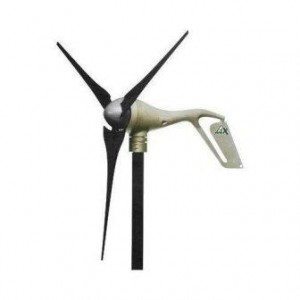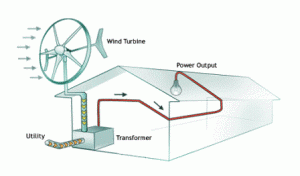How Wind Power Works
By Mary Jones
You don’t have to become a geek to know how wind power works
Wind is the result of the uneven heating of the Earth by the sun and the fact that temperatures are invariably attempting to reach an equilibrium (heat is obviously moving to a cooler area). With the rising price of energy and the damage to the environment from standard fuels, it is starting to be equitable to harvest this renewable resource.
The advantages of wind energy are that it’s virtually free (once you purchase the equipment) and there’s no pollution. The disadvantages include the fact it’s not a constant source (the speed varies and many times it is insufficient to produce electricity) and it typically requires about one acre of land.
How Wind Energy Works
The quantity of power that is available varies by wind speed. The total amount available is called it’s power density and it’s measured in watts per square meter. For this reason, the U.S. Department of Energy has separated wind energy into classes from 1 to 7. The normal wind speed for class 1 is 9.8 mph or less while the average for a class 7 is 21.1 or even more. For effective power production, class 2 winds (11.5 mph average speed) are generally required.
Generally, wind speeds increase as you get higher above the Earth. For that reason, the typical windmill is a component of a tower no less than 30 feet above obstructions. There are two basic different kinds of towers used for residential wind power systems (free standing and guyed). Free standing towers are self supporting and are usually heavier meaning they take special equipment (cranes) to set them up. Guyed towers are supported on a concrete base and anchored by wires for support. They typically are not as heavy and most manufacturer’s produce tilt down models which is often easily raised and lowered for maintenance.
The kinetic (moving energy) from the winds is harnessed by a device known as a turbine. This turbine includes airfoils (blades) that capture the power of the wind and use it to turn the shaft of an alternator (like you have on a car only bigger).
There are two basic kinds of blades (drag style and lifting style). We all have seen pictures of old windmills with the large flat blades which are a good example of the drag style of airfoil. Lifting style blades are twisted instead of flat and resemble the propellor of a small airplane.
 A turbine is classified as to whether it is made to be installed with the rotor in a vertical or horizontal position and whether the wind strikes the blades or the tower first. A vertical turbine typically requires less land for it’s installation and is a better option for the more urban areas on the planet. An upwind turbine is created for the wind to impact the airfoils before it does the tower.
A turbine is classified as to whether it is made to be installed with the rotor in a vertical or horizontal position and whether the wind strikes the blades or the tower first. A vertical turbine typically requires less land for it’s installation and is a better option for the more urban areas on the planet. An upwind turbine is created for the wind to impact the airfoils before it does the tower.
These units normally have a tail on the turbine which is required to maintain the unit pointed into the wind. A downwind turbine doesn’t need a tail as the wind acting on the blades tends to maintain it oriented properly.
These turbine systems would be damaged if they were to be permitted to turn at excessive speeds. Therefore, units will need to have automatic over-speed governing systems. Some systems use electrical braking systems while some use mechanical type brakes.
The output electricity from the alternator is sent to a controller which conditions it for use in the home. The use of residential wind power systems requires the home to either remain tied to the utility grid or store electricity in a battery for use when the wind doesn’t blow sufficiently.
 When the home is tied to the grid, the excess electricity that is produced by the residential wind power system can be sold to the utility company to reduce or even eliminate your power company bill. During periods with not enough wind, the home is supplied power from the utility company.
When the home is tied to the grid, the excess electricity that is produced by the residential wind power system can be sold to the utility company to reduce or even eliminate your power company bill. During periods with not enough wind, the home is supplied power from the utility company.
The Cost of Wind Energy
Small residential wind power turbines can be an attractive alternative, or addition, to those people needing over 100-200 watts of power for their home, business, or remote facility. Unlike PV’s, which stay at basically a similar cost per watt independent of array size, wind generators get more affordable with increasing system size. At the 50 watt size level, for instance, a small residential power turbine would cost about $8.00/watt in comparison to approximately $6.00/watt for a PV module.
That is why, all things being equal, Photovoltaic is less expensive for very small loads. As the system size gets larger, however, this “rule-of-thumb” reverses itself.
At 300 watts the wind turbine costs are down to $2.50/watt, while the PV costs are still at $6.00/watt. For a 1,500 watt wind system the cost is down to $2.00/watt and at 10,000 watts the cost of a wind generator (excluding electronics) is down to $1.50/watt.
Mary Jones writes for the residential wind power site, her personal hobby blog dedicated to ways to reduce CO2 and lower energy costs using alternative power sources.
